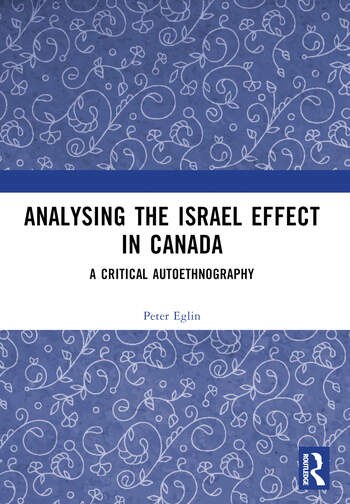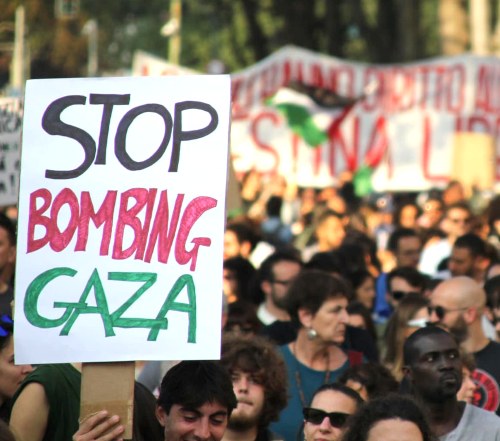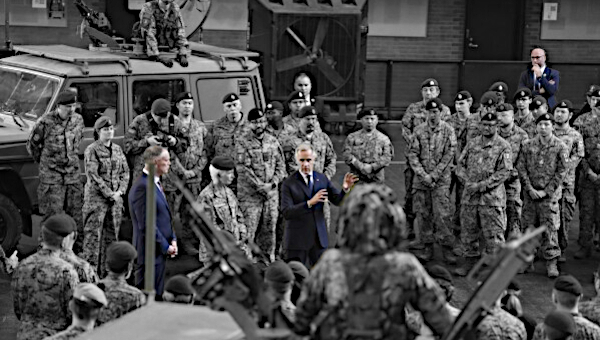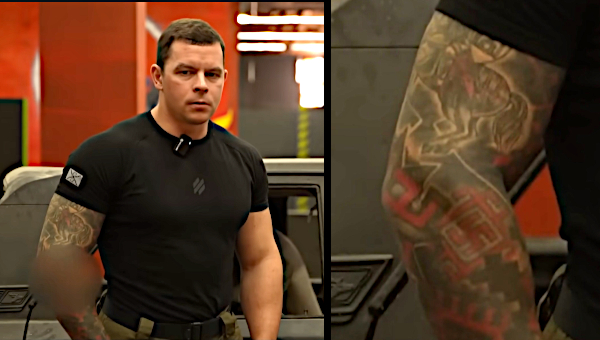Analyzing the Israel Effect in Canada
If truth and justice are the most potent weapons in the arsenal of the oppressed … — Norman Finkelstein1
What is the life of a Palestinian worth? Is it worth an em in an editorial in the pages of the [name your Canadian newspaper]?
What are the lives of 30, 60, 109 Palestinians worth? Are they worth a column inch in such an editorial?
How many murdered Palestinians does it take to disturb the conscience of the owners and editors of the Canadian media, of the leaders and spinners of the [name any one of “the four major political parties” of Canada], of the members of the Business Council of Canada, of Universities Canada, of the leaders of the major evangelical Christian churches?
We know the answer. There is no such number. Palestinian lives have no value for the guardians of truth, freedom and justice, of morality, order and good government, in this country.
In fact, they have negative value, for by dying they force our moral gatekeepers to engage in the distasteful task of having to justify, excuse or turn away from their killing. Although not a Canadian, former Israeli Prime Minister Golda Meir said it best: “We can forgive the Arabs for killing our children. We cannot forgive them for forcing us to kill their children.”
It’s no use reciting the facts. It’s no use showing young Palestinians being shot and killed on TV. Facts and images don’t apply because the ones being shot and killed are not people in the first place. They are un-people, so, of course, they can’t be murdered, because you have to be a person to be murdered. When you are just an animal, we don’t murder you, we put you down.
I say “we” because that’s what “we” are doing. Helping to put down those un-people.
Those doing the actual putting down are Israeli Jews. The irony cannot have escaped us. The very “un-people” – “vermin”, “lice” – put down by the Nazis are putting down those they regard in similar terms. We are victims of the victims, said Palestinian-American intellectual Edward Said.
The question here, however, is not for Jewish Israelis. It’s for complicit Canadians, the aiders and abettors in the major institutions of Canadian society, and the rest of us who look on then turn away.
What would we do in the face of 70 years of murderous oppression and ethnic cleansing? What is 14-year-old Ezzeddin Al-Samak worth to us? What is the life of a Palestinian worth?
I sent the opinion piece above to the press on Thursday, 17 May 2018. Three days earlier, that is on 14 May 2018, the Institute for Middle East Understanding reported on Twitter the latest murders of Palestinians taking part in the Great March of Return: “Palestinian Ministry of Health confirms that 52 Palestinians have been killed by Israeli forces in the besieged Gaza Strip today.2 108 Palestinians in total have been killed since March 30th.
I had sent earlier versions of the above op-ed to the Waterloo Region Record, The Globe and Mail, and the Toronto Star, and all three rejected my submissions. I turned to the Star again in the hope I would fare better (and doctored the piece, inexcusably in retrospect, by leaving out reference to the Liberal and New Democratic Parties of Canada, the Star being a left-liberal paper). But to no avail – another rejection followed…

The subject in question is the complicity of onlookers in Israel’s murderous oppression of the Palestinians over the last thirty-odd years, the period of my engagement with the issue. All three institutions have been ‘eyeless on Gaza,’ to adapt the title of Huxley’s novel, Eyeless in Gaza, that invokes Milton’s poem “Samson Agonistes” in which, following the Bible story, Samson was, literally, eyeless in Gaza. It’s not that The Globe and the Record have not reported or editorialized on what they misleadingly call the ‘conflict.’ In fact, they printed editorials on the carnage referred to here on the 14th and 18th of May 2018 respectively (editorials I take up in my book). It’s not that WLU has not taught its students (something) about said ‘conflict.’ It’s not, then, that university and newspapers have not had ‘eyes’ on Gaza. Rather it’s about their failure as institutions to ‘see’ Gaza through the lens of the intellectual responsibility that comes with their respective academic mission and editorial mandates, devoted as they are to truth telling. Missions and mandates are the more onerous and compelling when the matters in question are of grave human concern, involving egregious crimes that would outrage the conscience of the country were it the case that the institutions in question – more broadly, Canadian universities and the major Canadian news media – took said intellectual responsibility seriously.
Norman Finkelstein makes a parallel point about the extensive body of reports by the mainstream human rights organizations documenting the crimes in question.
“If truth and justice are the most potent weapons in the arsenal of the oppressed, the manifold reports of these human rights organization are the most underutilized resource of those struggling for a just resolution of the Israel-Palestine conflict. It appears that they are rarely read and almost never cited. And it is mainly because these uniquely authoritative publications lie around collecting dust that apologists can propagate so much mythology about Israel’s human rights record. Were their findings widely disseminated, Israel’s occupation would clearly be seen as morally indefensible.”3
He proceeds to provide the findings of those human rights reports in chapters four to nine of his 2005 book Beyond Chutzpah and, again, in his magnum opus, Gaza: An Inquest into its Martyrdom, published in 2018. On 22 October 2021, United Nations Special Rapporteur for human rights in the occupied Palestinian territory, Michael Lynk, presented his sixth report to the General Assembly. Citing multiple human rights reports, it included the following paragraph on “international responsibility for the ongoing occupation:”
“In recent years, the now 54-year-old Israeli occupation of Palestine – always repressive, always acquisitive – has been metastasizing into something much harsher and more entrenched: the permanent alien rule of one people over another, encased in a two-tiered system of unequal laws and political rights. More than 680,000 Israeli settlers living in segregated and privileged settlements amid 5 million stateless Palestinians; asymmetrical wars; geographic fragmentation; a smothered and heavily aid-dependent economy; separate networks of roads and utilities; impoverished and fenced-in ghettos unique in the modern world; a coercive environment; the growing amount of violence required to maintain the occupation; the denial of self-determination; the deeply lopsided access to property and to social, health and employment rights. All of this based entirely on nationality and ethnicity. All of this should be unthinkable in the twenty-first century.”4
Unthinkable or not, it received no mention in The Globe and Mail, the Toronto Star or the Waterloo Region Record.
Israel, at least, appreciates the significance of human rights reports. On the same Friday that Lynk’s UN report was released,
“Israel … designated six Palestinian civil society groups as terrorist organizations and accused them of funnelling donor aid to militants, a move that drew criticism from the United Nations and human-rights watchdogs… The groups include Palestinian human-rights organizations Addameer and Al-Haq…”5
The ‘Great March of Return’ went on for about eighteen months (2018-19). In December 2021 the Toronto Star carried the wire service account of the human rights report on the State of Israel’s response to the Great March put out by Israeli human rights group B’Tselem and the Gaza-based Palestinian Centre for Human Rights. This was itself a positive sign perhaps of the increasing difficulty of avoiding noticing Israel’s ongoing atrocities, a matter we return to in the book’s Conclusion. Over the course of the eighteen months,
“Israeli fire killed at least 215 Palestinians, most of them unarmed, including 47 people under the age of 18 and two women … [T]he military failed to investigate orders issued by senior commanders and took virtually no action against any soldiers … The [one] indicted soldier [who killed a ‘14-year-old Palestinian’] was convicted of ‘abuse of authority to the point of endangering life or health’ in a plea bargain and sentenced to one month of community service … after more than 13,000 Palestinians were wounded … including more than 8,000 hit by live fire. At least 155 required amputation…”6
Five days later “Israel … announced the completion of an enhanced security barrier around the Gaza Strip … [that] includes radar systems, maritime sensors and a network of underground sensors to detect militant tunnels … [and] a 6-meter (6.5 yard) high ‘smart fence’ with sensors and cameras.”7
Earlier in the year Israel had again bombarded Gaza in an 11-Day campaign (10-21 May 2021), killing 247 Palestinians, including “at least 66 children,” at the expense of 12 Israeli and other civilians, “including two children.”8 Moreover, UN Special Rapporteur Michael Lynk reported in January 2022 that as a result of inexorable settlement growth,
“10 percent of the Israeli Jewish population are now living in occupied territory. The level of violence required by Israel to sustain the occupation has been steadily increasing. In terms of Palestinian deaths at the hands of the Israeli military and settlers, 2021 is already the deadliest year since 2014. (Since 2008, the United Nations has reported that 5,985 Palestinians have been killed by Israeli violence, while 264 Israelis have died by Palestinian violence during the same time period).”9
All of the above happened, of course, well before the genocide – or what I prefer to call the ‘socio-cide’ – Israel has been carrying out in Gaza since October 8th, 2023.
This article is an abridged version of the Introduction to the new book Analysing the Israel Effect in Canada A Critical AutoEthnography, by Peter Eglin.
Endnotes
- Finkelstein, Norman. Beyond Chutzpah: On the Misuse of Anti-Semitism and the Abuse of History. Updated edition with a new preface. Berkeley and Los Angeles, CA: University of California Press, p. 94. (Originally published in 2005.)
- The book goes on to list the names and ages of those killed that day.
- Finkelstein, Beyond Chutzpah, p. 94.
- United Nations, General Assembly, Report of the Special Rapporteur on the situation of human rights in the Palestinian territories occupied since 1967, Michael Lynk, 9.
- Rami Ayyub, Tel Aviv, Reuters, “UN ‘alarmed’ as Israel designates six Palestinian civil society groups as terrorists,” The Globe and Mail, Friday, 22 Oct. Accessed 7 November 2021.
- Joseph Kraus, Associated Press, “Report: Israel failed to probe shootings at Gaza protests,” Toronto Star, 2 December 2021. Accessed 17 December 2021.
- Associated Press, “Israel announces completion of security barrier around Gaza,” Toronto Star, 7 December 2021. Accessed 17 December 2021.
- Josef Federman, The Associated Press, “Rights group: Israeli strikes on Gaza broke law,” Waterloo Region Record, Tuesday, 23 August 2021. Accessed 20 June 2024.
- Michael Lynk, “The international community and Israel: Giving permission to a permanent occupation,” Just Security, Accessed 22 January 2022.






